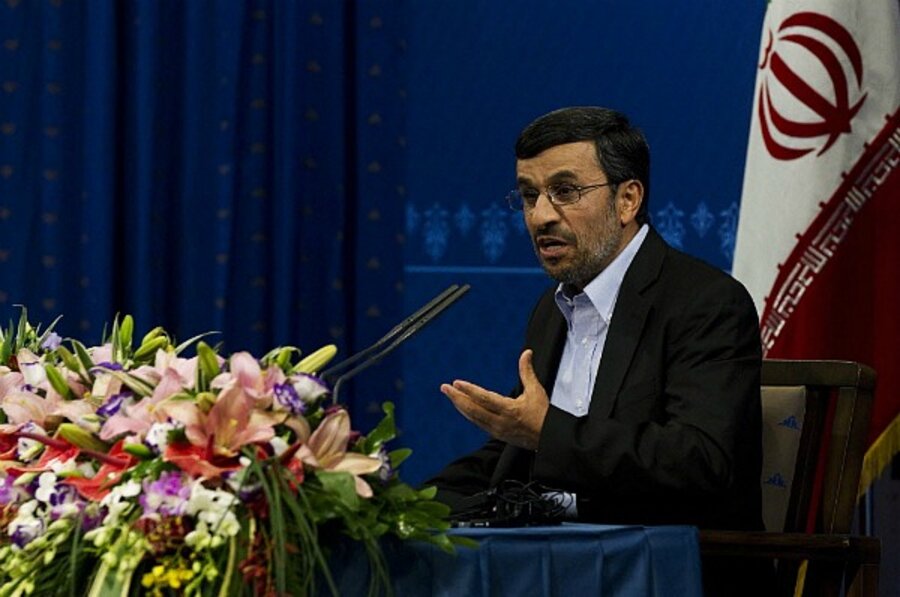Iran accelerates uranium enrichment: Danger or bluff?
Loading...
| Washington
Iran’s announcement this week that it plans to speed up its enrichment of uranium – and to move part of its enrichment process from the desert to a more defensible mountain site – has spawned wide-ranging speculation on Tehran’s nuclear intentions.
If Iranian officials made the point of publicly announcing the plans after a ministerial meeting Wednesday, the intention was to promote the world’s gradual acceptance of Iran eventually developing a nuclear weapon, some nuclear experts say.
Another line of thinking is that the plans to develop more efficient and higher grade uranium-producing machines at a site inside the mountains near the city of Qom suggest the Iranians are preparing their program to be able to withstand an eventual attack by Israeli or American bombers.
Speculation aside, what seems clear is that Iran is intent on accelerating production of what is currently its highest grade of uranium – 20 percent enriched – to expand its options in the face of international demands that it cease enrichment altogether.
“They’re shortening their decision time” between amassing the enriched uranium it would take to begin building a nuclear weapon and actually moving forward with building one, says Henry Sokolski, executive director of the Nonproliferation Policy Education Center in Washington.
“We’re busy trying to fool ourselves into thinking we have all the time in the world,” he adds, “while the Iranians are intent on getting to where they could make some extremely critical decisions in a very short period of time.”
Yet one factor tamping down reaction to Iran’s announcement is that no one knows if Iran has either the genuine intention or the technical capability to follow through on enrichment acceleration.
“One thing we know for sure from following the Iranians in this process since 2002 is that they have made a lot of announcements like this one, and some of the things they have done, and some they haven’t,” says Daryl Kimball, executive director of the Arms Control Association in Washington.
A tendency to make startling claims about Iran’s next big step in its nuclear program is especially true of President Mahmoud Ahmadinejad. And the difficult political straits Mr. Ahmadinejad finds himself in at home could be part of the explanation for the enrichment announcement.
“This is part bravado, and the statement being made at this time is clearly designed to shore up a government that is internally divided,” Mr. Kimball says.
The Monitor's Weekly News Quiz for June 5-10, 2011
But the statement is also aimed at an international audience, he adds, noting that the International Atomic Energy Agency, the United Nations’ nuclear watchdog agency, just issued its “toughest report yet” on Iran’s nuclear program.
“This is Iran’s response,” Kimball says. “It suggests they are determined to expand their enrichment capabilities despite the difficulties they are facing as a result of sanctions, and despite the fact they are more and more isolated.”
Western intelligence experts generally concur that Iran’s nuclear progress has been slowed over recent months by a combination of UN-sanctioned economic measures, improved constraints on Iran’s importation of technology and machinery for its nuclear program, and a covert Western mission to infect Iran’s nuclear program with a computer worm known as Stuxnet.
Kimball says Iran’s statement “puts the world on notice” about the country’s determination. But he adds that, short of signs of progress in the intended direction, the statement does not suggest a crisis moment.
“There is still time to arrive at a diplomatic solution,” he says. The international community’s focus, he adds, should be on “limiting the size of Iran’s enrichment facilities,” and requiring Iran to accept a much more extensive monitoring and inspections program.





